Bac Ha Market
Sunday's most awaited event in Northern Vietnam
Bac Ha market which takes place every Sunday is famous for the originality and authenticity that the traders still preserve.
Overview
While the central Sapa market continues to attract tourists, the original ethnic markets of Lao Cai remain vibrant, catering specifically to the needs of local ethnic groups.
Bac Ha Sunday market is one of the largest, busiest, and most colorful markets in the region. Every Sunday, the Flower Hmong and Giay people from surrounding rural villages converge on the market from early dawn, often traveling by foot, horseback, or motorbike. Aside from trading goods, the market serves as a vital social hub for the community.
 Women traders in their colorful brocade at Bac Ha market - Photo by Ken Zogas
Women traders in their colorful brocade at Bac Ha market - Photo by Ken Zogas
Given the significant distances they must travel to reach the market—and the isolation of their homes—Bac Ha's weekly fair is an essential social event for minorities and offers a glimpse into the rich culture of the mountain community for fortunate tourists.
The ongoing debate about whether the influx of tourists is beneficial or detrimental to this traditional market prevails. Nevertheless, Bac Ha market remains a distinctive experience, drawing admiration from visitors eager to witness its unique charm.
Location and Structure
Bac Ha market is located in the heart of Bac Ha district, Lao Cai province, positioned near the border with China. Travelers from Lao Cai city must travel about 65 kilometers east to reach this prominent market.
Originally, Bac Ha market was set upon a gentle red soil hill. With the increasing number of visitors over the years, the market has been transformed into a new concrete structure featuring various selling areas. Although the pristine natural beauty has altered, the essence of highland living continues to endure.
The market is organized into three main sections surrounded by local houses: a central area for agricultural products, a right wing for food and refreshments, and a left section dedicated to livestock trading. Additionally, there are two specialized sections for trading horses and dogs.
Explore Bac Ha Market
Buy local ethnic souvenirs
Bac Ha market showcases a wide range of products, from handmade items to machine-produced goods, particularly brocade crafts. The artisanal products are typically softer and more intricate in design. Some pieces may take months or even years to create due to the elaborate dyeing and embroidery techniques involved. Shoppers are encouraged to take their time and choose thoughtfully to bring home authentic souvenirs of ethnic craftsmanship.
Most products are laid out on the ground beneath plastic sheets, allowing easy access for buyers, both local and international.
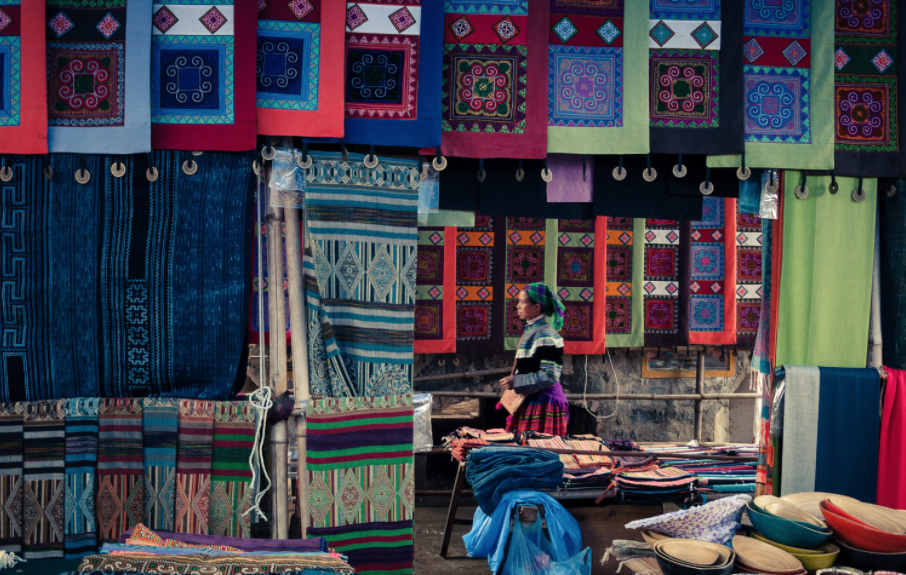 Brocade on display at Bac Ha market - Photo by nghiatranhoang
Brocade on display at Bac Ha market - Photo by nghiatranhoang
Experience local cuisine
The food area is consistently the busiest part of the market, and Bac Ha is no exception. By visiting the food stalls and interacting with locals, visitors can learn about the daily lives of highland tribes while sampling traditional dishes. The enticing aromas and warmth of freshly prepared food make it hard to resist, especially on a chilly day.
One of the most popular dishes is Thang Co, a unique delicacy traditionally made from horse meat, though variations now often include pork, beef, or organ meats, enhancing its flavor. Visitors are encouraged to pair their meal with a glass of local corn wine. This drink starts with a light flavor but packs a warming punch upon swallowing. There is no better way to appreciate the local culture than by indulging in the culinary delights of the highland people.
Visit the animal market
If you find yourself in need of a break from shopping and eating, the sight of the bustling animal market is sure to captivate. Here, livestock mainly comprises cattle and poultry, with locals displaying a deep affection for their animals—trading with care and attention.
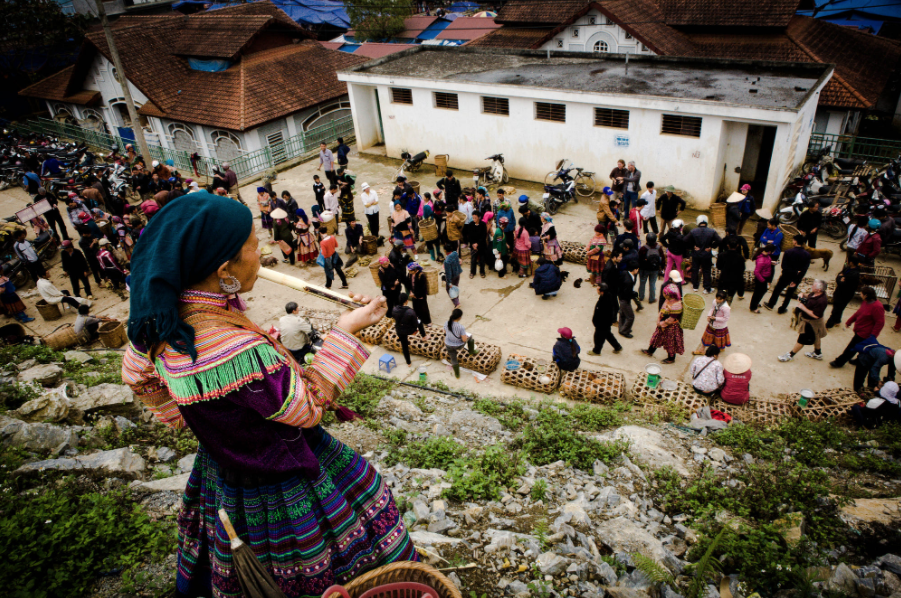 Enjoying local delicacies while observing the poultry trading scene
Enjoying local delicacies while observing the poultry trading scene
The atmosphere of bargaining and camaraderie among buyers creates a lively scene in the market, where people not only trade for livestock but also purchase animals for cooking purposes. Unique to Bac Ha is the area dedicated to horse and dog trading. Bac Ha horses are known for their short stature, thick coats, and resilience to cold weather, making them suitable for transportation and farming. Additionally, the market is famous for its dog breeds, which are celebrated for their intelligence and loyalty. Each Lunar New Year, pet lovers from across Vietnam flock to Bac Ha to acquire a puppy as a companion.
Best time to visit
The New Year period is an excellent time to visit Bac Ha market, as the trading activities peak with a diverse array of products. Ethnic people arrive in vivid traditional attire, preparing necessities for the upcoming year amid a bustling yet harmonious atmosphere. However, this festive season also coincides with a significant influx of domestic and international tourists, making it a busy time for photography.
If you are part of the photography crowd, please be considerate and request permission before taking photos of individuals, and try not to obstruct their activities. Alternatively, arriving early can help avoid larger crowds.
How to get there
With Lao Cai's growing status as a tourism hotspot in Northwest Vietnam, accessing the province has become increasingly convenient. From Hanoi, travelers can take a train, a public bus, or drive their own vehicle along the national highway directly to Lao Cai city. The journey typically takes around five to six hours. From there, public buses or private transport options are available to reach Bac Ha market. The route is straightforward and easy to navigate, with the market clearly identified along the way.
Useful Information
- Location: Bắc Hà, Lào Cai
- Best for: Family, solo
- Entrance: Free
- Hours: Sunday 7AM-12PM
- Distance to city center: 53.4km (33.2 mi)
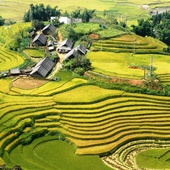
Ta Van Village
Located in Muong Hoa valley, Ta Van Commune is a favorite destination for those who are interested in homestay, community-based tourism and experiencing cozy atmosphere at houses of ethnic people.
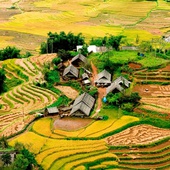
Ta Phin Village
Ta Phin has gone from being a stranger name to one of the most visited destinations in Sapa. Located about 17km in the west of Sapa, Ta Phin is a village of Red Dao’s people possessing a rich culture that has not been damaged by the modern life.
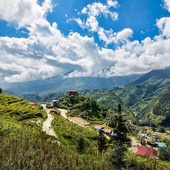
Cat Cat Village
Nestled in a beautiful valley about three kilometers from Sapa Town, Cat Cat- the old village of ethnic groups- attracts tourists from all over the world for its distinctive customs and practices which have been lost in almost ethnic villages. The village is within easy walking distance from any hotel in downtown Sapa.








